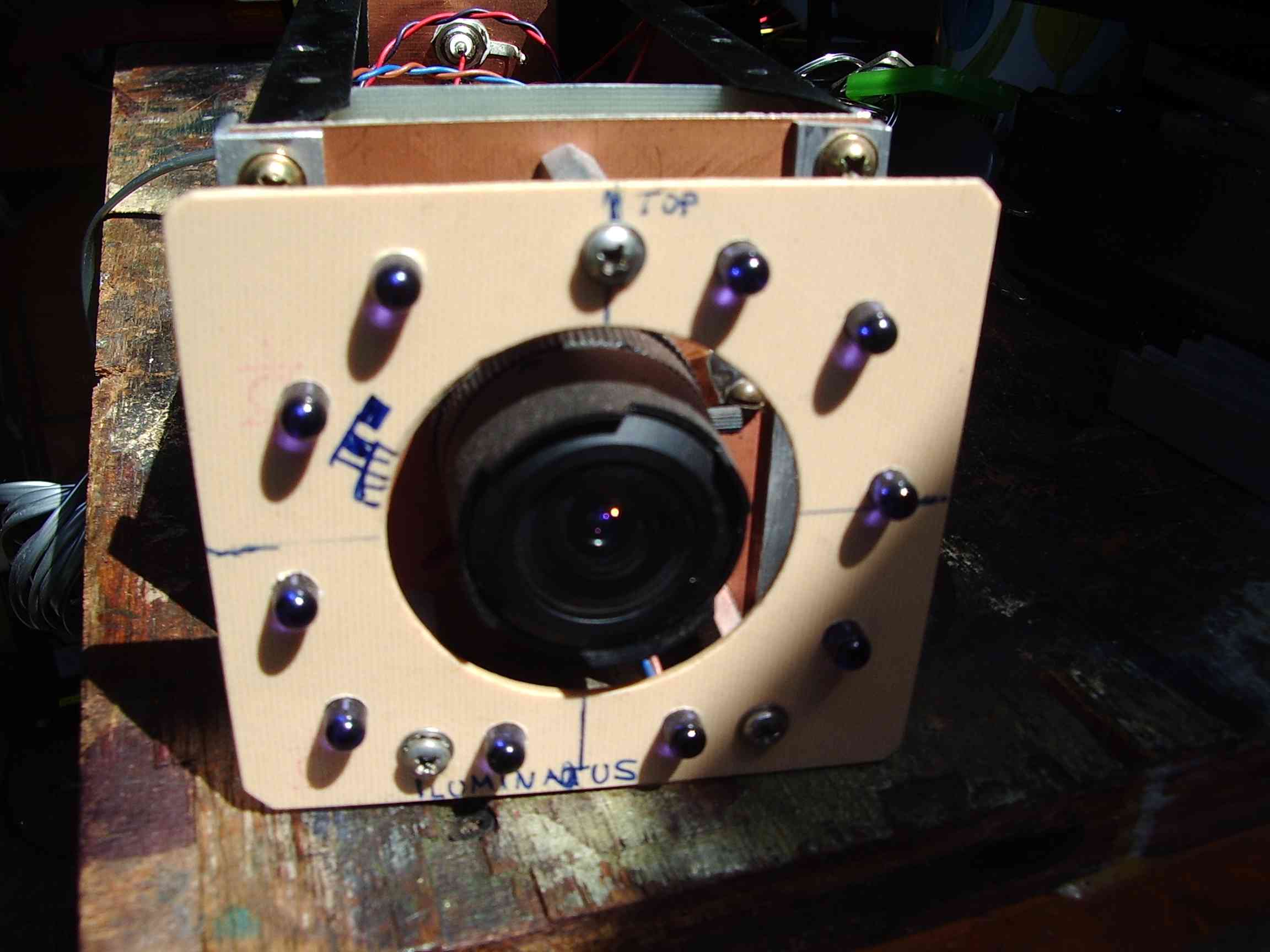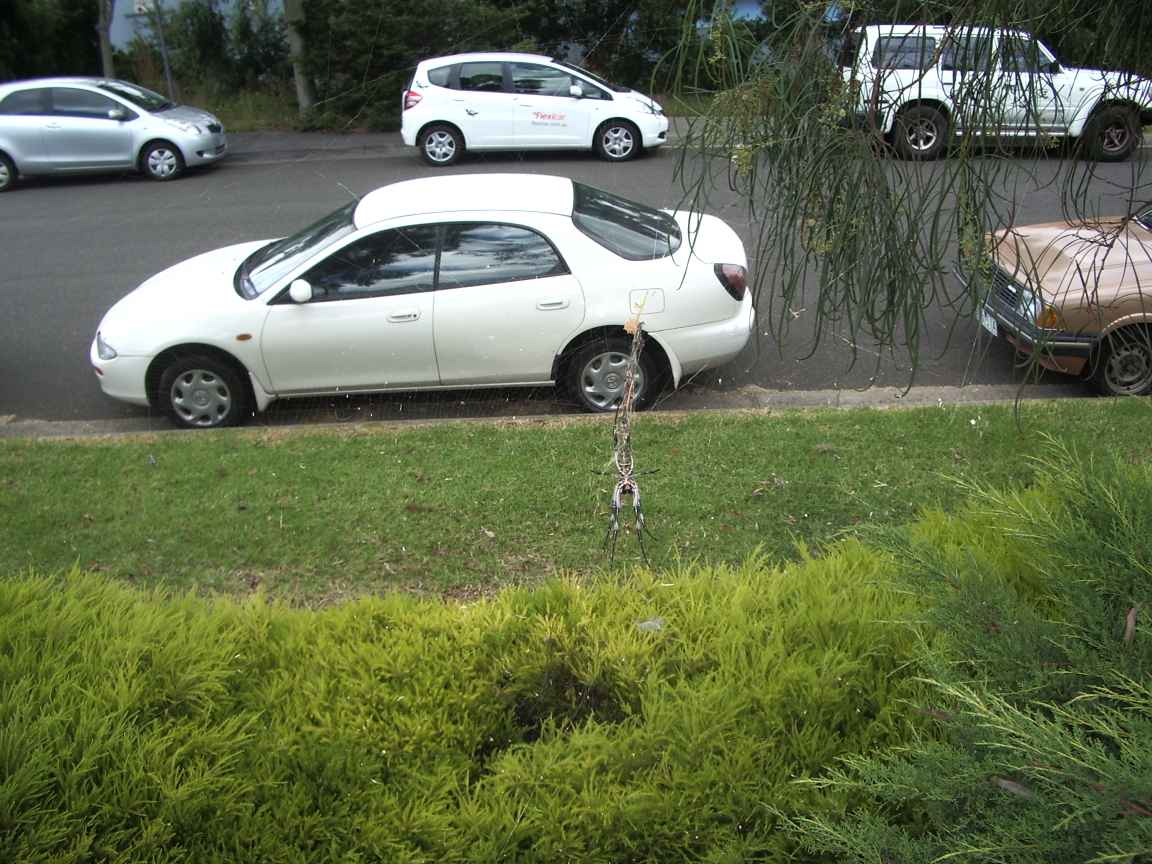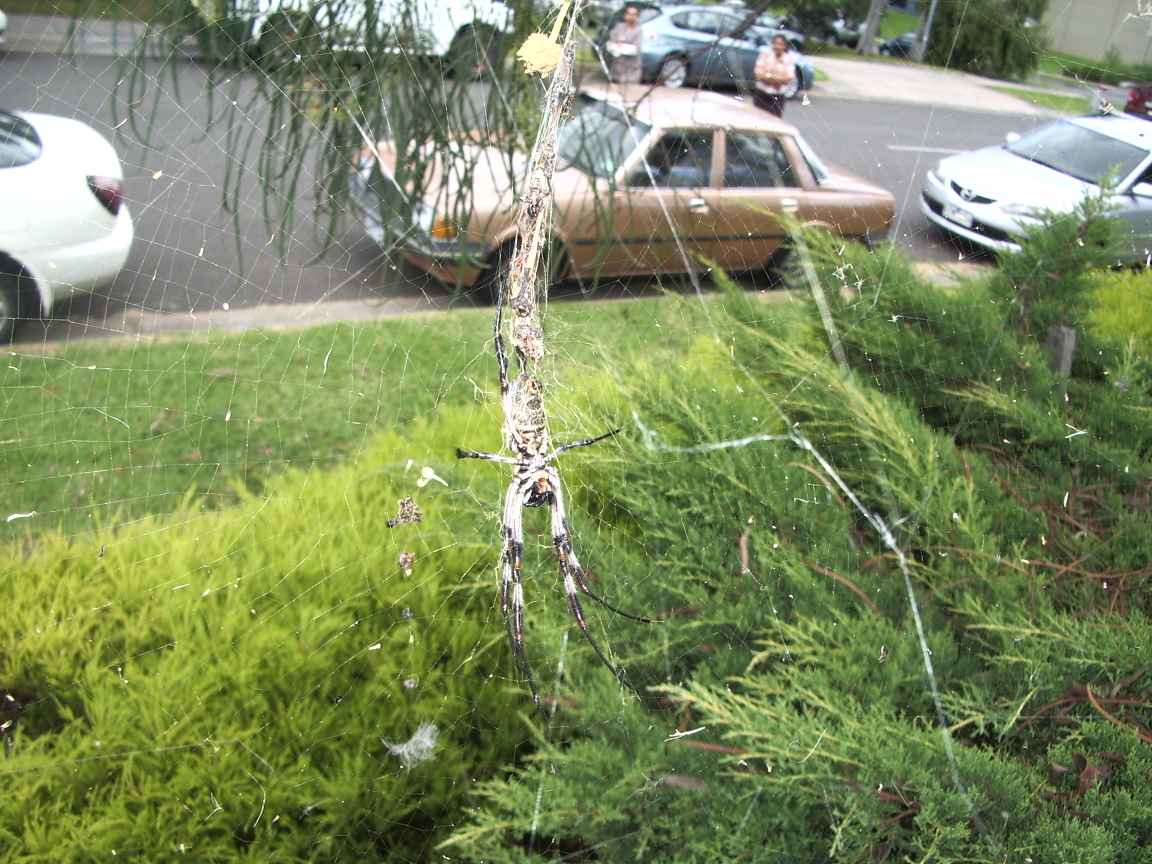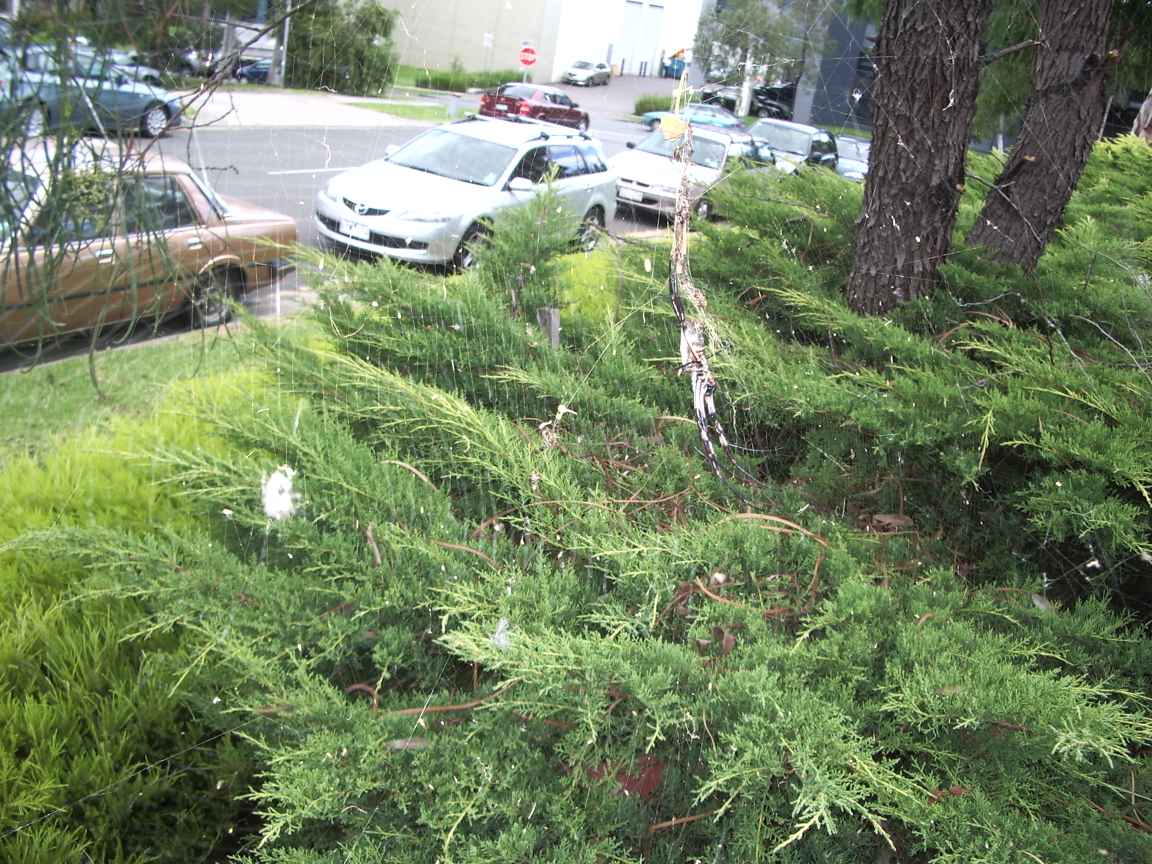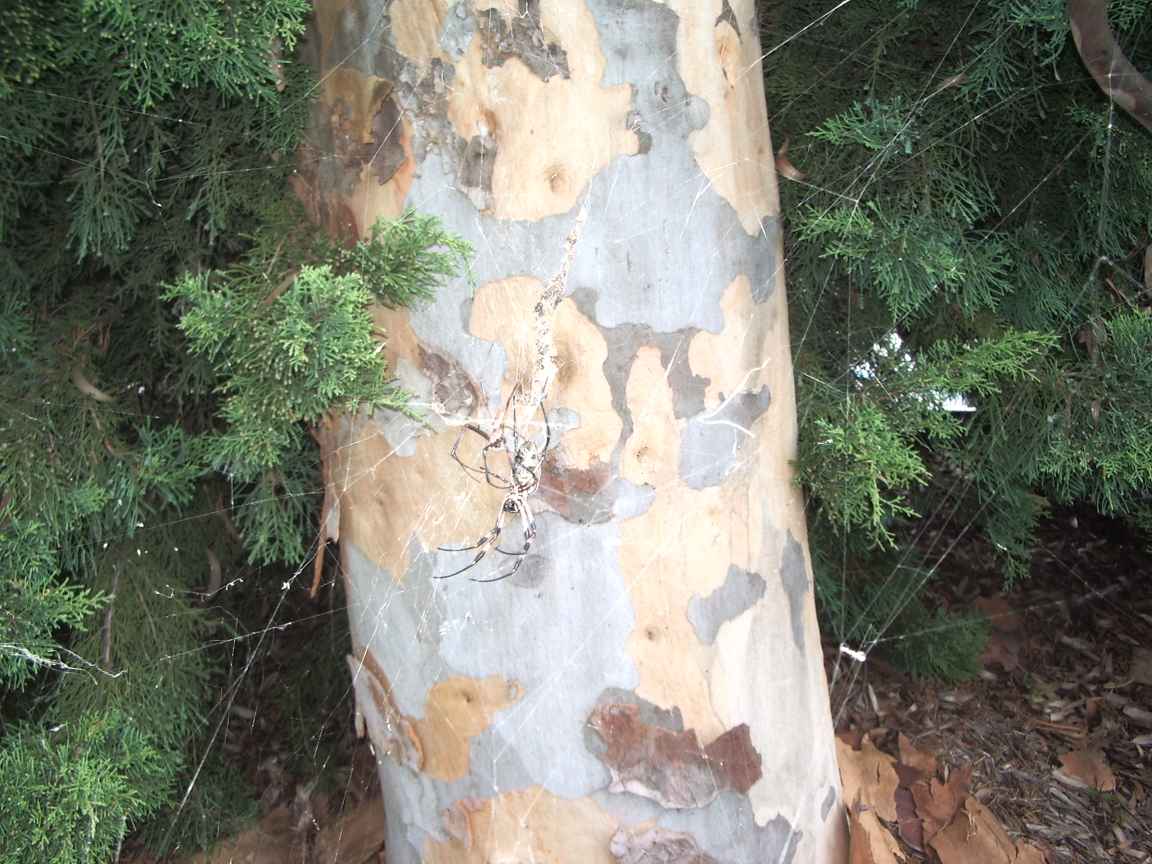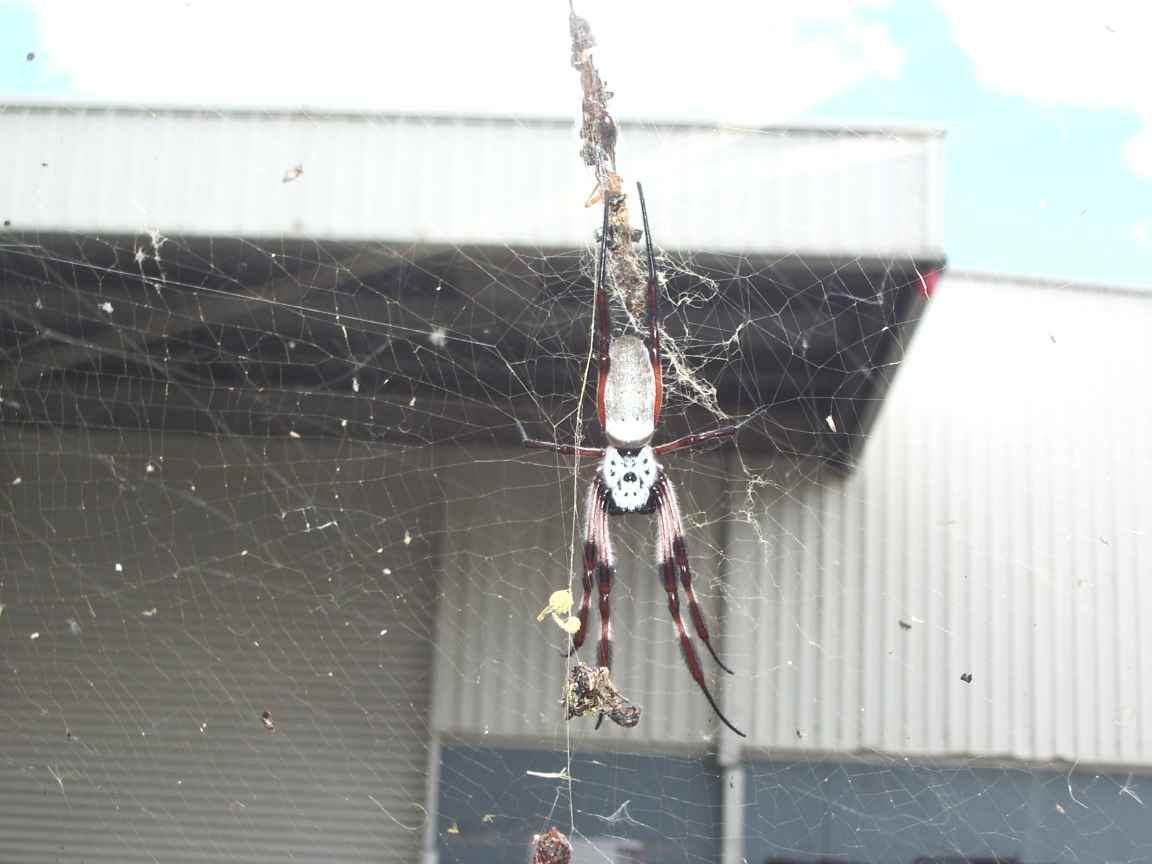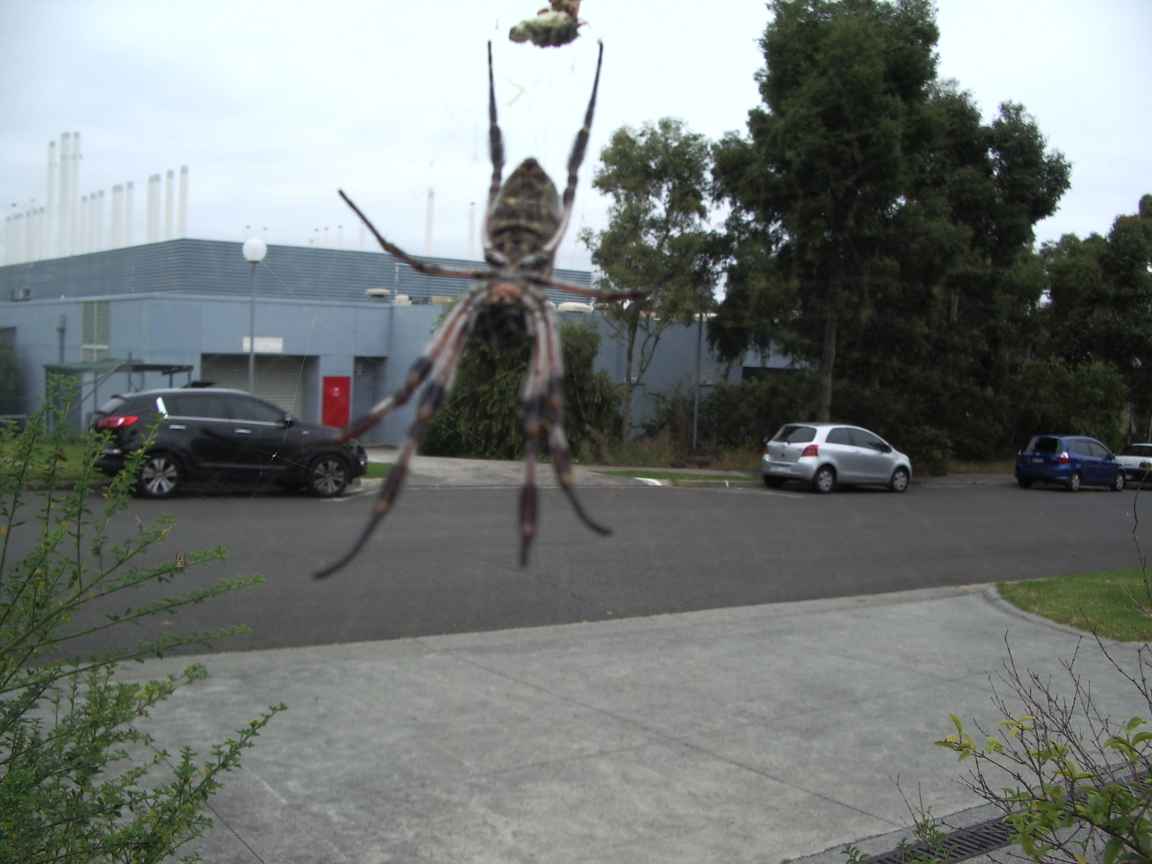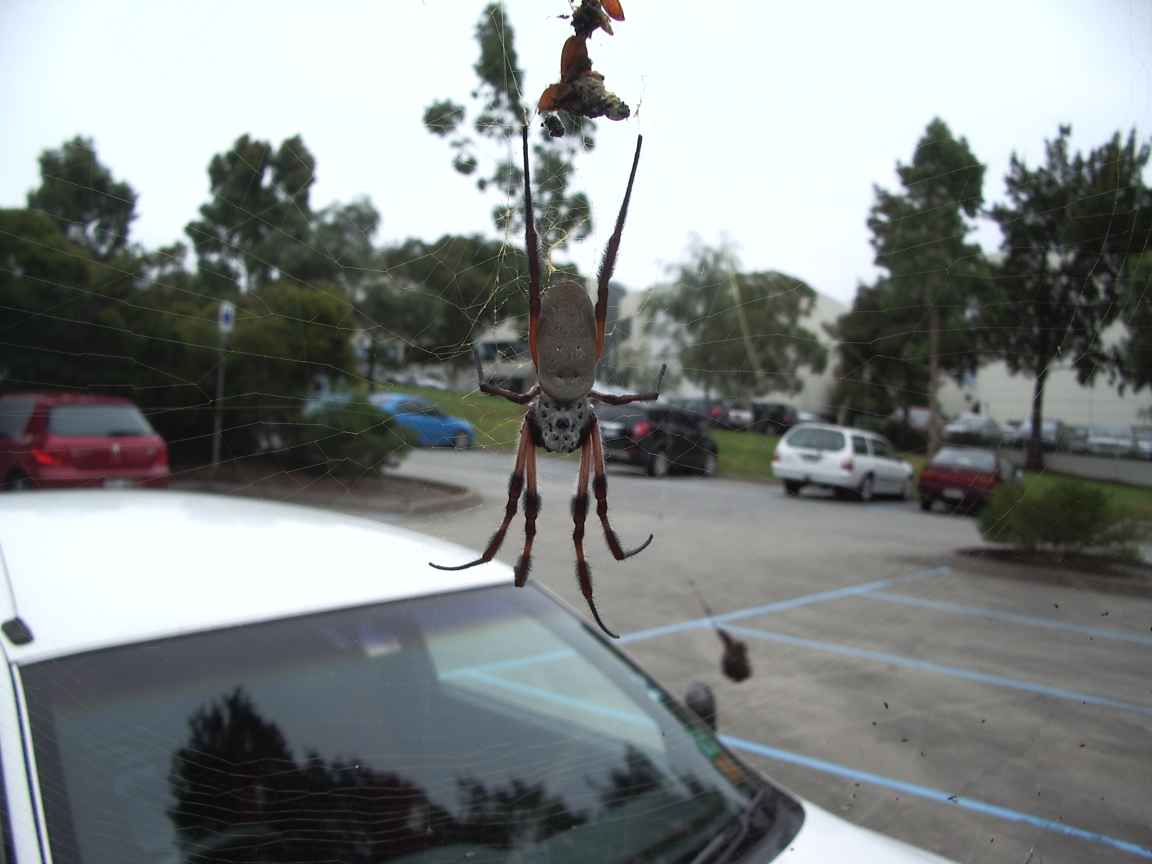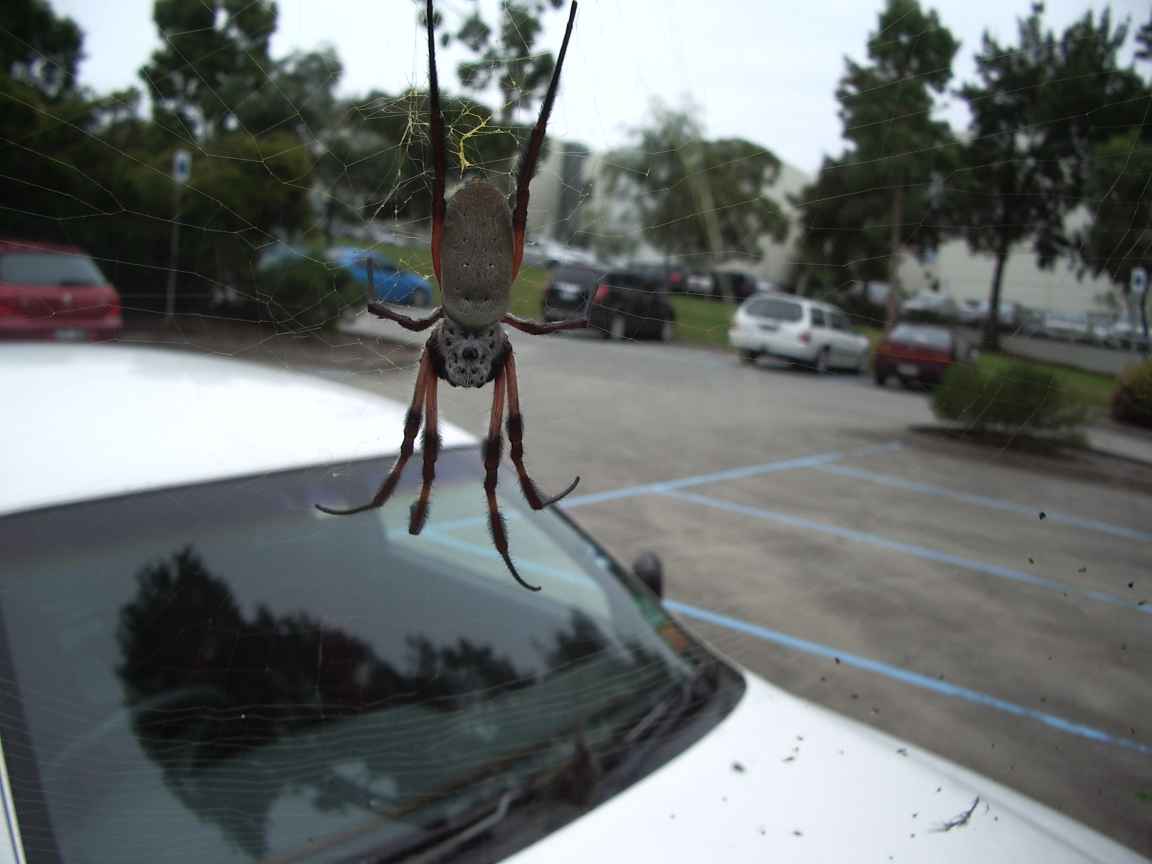| stink
arum berries. The actual color is bright orange which my camera makes
to be more yellowish. Judging by the complete lack of insect damage, I
would expect these berries to be highly toxic. | where the seed stalk is now hiding | the bulb that gave rise to the large male flower has now completely sprouted its lush foliage. The ruler is One Meter. |
What flower is this ?
November 2012-Jan 2013
My
late father has been trying to grow these very ordinary brown bulbs for
about 10 years. Each year they sprouted with a fungoid looking
purple green and pink mottled stalk that initially penetrates up through the
ground. Then, in about 2 days the stalk unfolds into one large leaf
that remains untill the start of the cold weather whence it
shrivels and dies. This year two of these bulbs did
something differant. A sinister looking purple fungoid stalk
appeared. After about half a day in bright warm sun this
extraordinary 50cm flower erupted from the stalk. And what a
remarkable flower it is. It stinks! The stench is hard to
describe, but suffice it to say that it is unpleaseant, but not quite as
nauseating as some stink arums are reputed to be. I shall attempt
to describe the stench. Imagine, if you would, rotting
onions, rotting ham, mix in a hint of cheap toilet cleaner scent
than cap of the after-smell with chlorine ! The plume
emitted from this flower causes my eyes to water, not only from the
chlorine-like stench, but from a cloud of purple pollen which can be seen if
the sun is at the right angle. The colour of the flower petal
resembles fresh horse meat, which my camera does not really capture.
The flower during daylight hours has a cloud of flies in
attendance. The stench is abruptly switched on in the morning as soon
as direct sunlight hits it and the stench is abruptly turned off at
sundown. The flower has ,so far, persisted for seven days
and small ovules are beginning to form so I expect this one could
be self pollinating (nope...male and female flowers from seperate bulbs)
as there is nothing else like this plant in
the neigbourhood. I do not know from whence my father obtained
this bulb, perhaps from a stranger in the pub ! I have never seen this
variety for sale in Australia. Nurserymen that I have spoken to know of
this and like flowers but no one has ever seen anything like it for
sale. Any ideas of what this stranger is ?
A
few weeks after the big flower wilted, the smaller one at the rear of
the pictures reveals itself to be a female. There is a small bunch of
bright green berries now growing.I wonder if the seeds are viable ?
The berries have now turned bright orange, the seed stalk a vivid
green with white spots. Insects are utterly unattracted, so I expect
these berries to be highly toxic.
|
